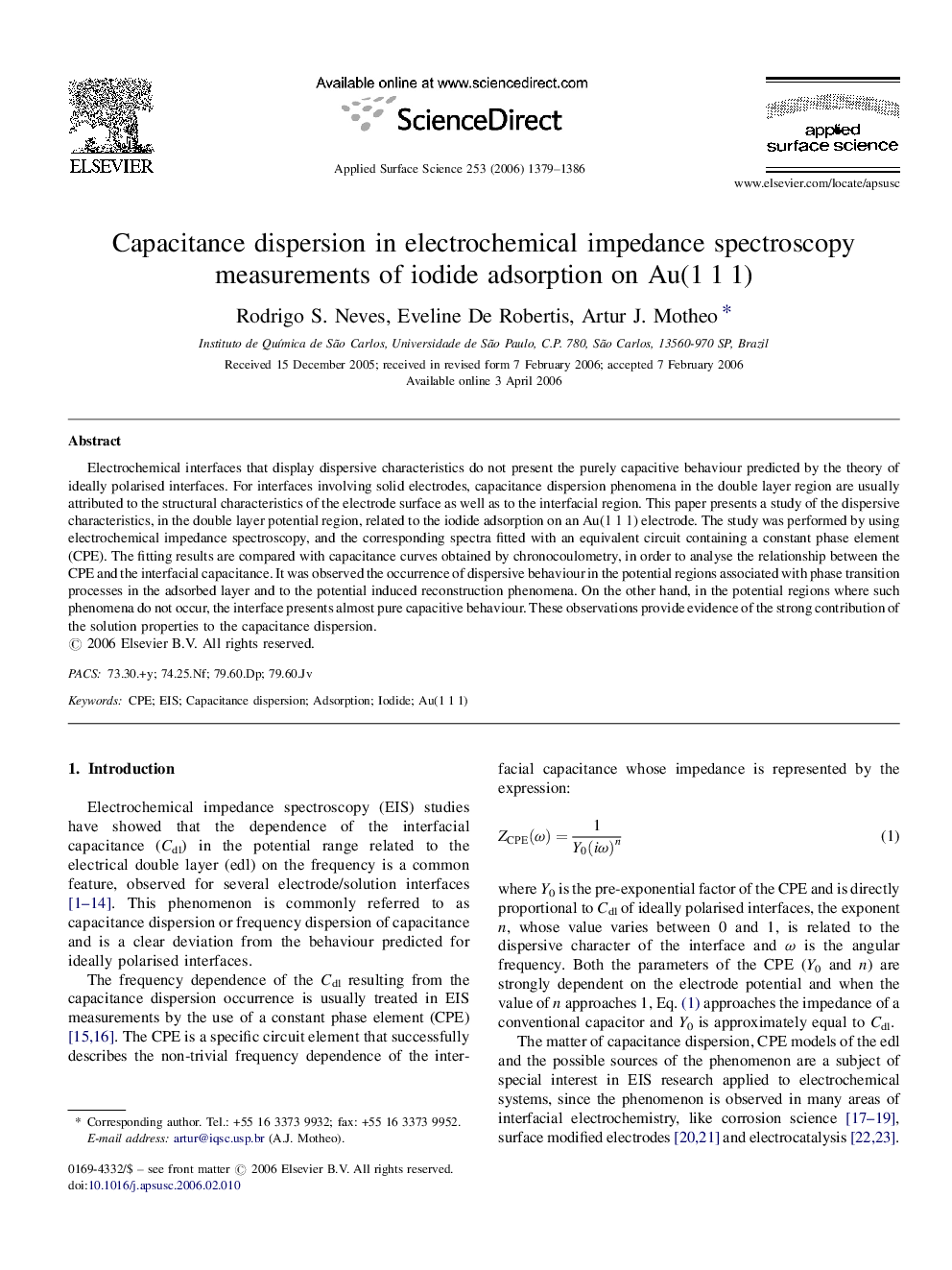| Article ID | Journal | Published Year | Pages | File Type |
|---|---|---|---|---|
| 5370158 | Applied Surface Science | 2006 | 8 Pages |
Electrochemical interfaces that display dispersive characteristics do not present the purely capacitive behaviour predicted by the theory of ideally polarised interfaces. For interfaces involving solid electrodes, capacitance dispersion phenomena in the double layer region are usually attributed to the structural characteristics of the electrode surface as well as to the interfacial region. This paper presents a study of the dispersive characteristics, in the double layer potential region, related to the iodide adsorption on an Au(1Â 1Â 1) electrode. The study was performed by using electrochemical impedance spectroscopy, and the corresponding spectra fitted with an equivalent circuit containing a constant phase element (CPE). The fitting results are compared with capacitance curves obtained by chronocoulometry, in order to analyse the relationship between the CPE and the interfacial capacitance. It was observed the occurrence of dispersive behaviour in the potential regions associated with phase transition processes in the adsorbed layer and to the potential induced reconstruction phenomena. On the other hand, in the potential regions where such phenomena do not occur, the interface presents almost pure capacitive behaviour. These observations provide evidence of the strong contribution of the solution properties to the capacitance dispersion.
